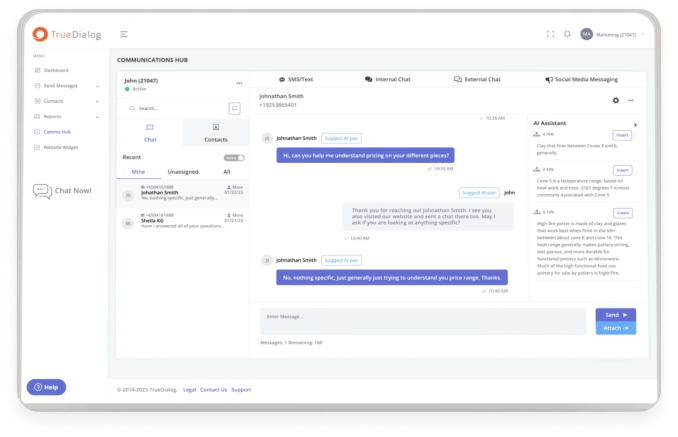There are over 6 billion texts sent via Americans every day, making text messaging the most prevalent form of communication, according to Gallup. It’s no wonder organizations are jumping on board to use it as another platform to engage with their audience. But for most of us, the thought of developing a strategy to start texting is just overwhelming.
In an effort to make this subject a bit easier to approach, we’ve compiled a list of a few quick and easy steps that will help get your organization well on its way!
Step 1 – Build Your List
One of the easiest ways to get people to subscribe to your list is to give them a chance to do so at every point of contact.
Brainstorm of all the places you can add your opt-in form. For example, places like your website, social media accounts, and signature line are great places to start. Also, train your staff to share the benefits of opting-in with your customers/clients/ network.
Step 2 – Segment Your List
When someone subscribes to your list, be sure to inquire as to how often they’d like to receive messages, and what type of information they want. Then place them into categories based on these requests.
Segmenting your list will help ensure your audience is getting information that is most useful and relevant to them. It could mean the difference between being a helpful, educational source, verses being ignored.
Step 3 – Learn Your Subscriber
After you’ve segmented your list based on preferences, take it one step further by personalizing your content. Overtime, you may be able to analyze demographics, purchase history, and behavioral patterns to tailor your message even further.
Remember, being personable goes a long way when it comes to building your following. Avoid using robotic and generic language. Response rates are higher when the message feels as though it is addressed directly to the recipient.
Step 4 – Develop Short and Sweet Messages
With traditional SMS messages, you only have 160 characters to express yourself. However, the faster you’re able to get to the point of your message, the better.
Before hitting “Send”, reread your message and eliminate any filler words and phrases. Only include information that is most relevant, and communicate it in plain English. Avoid capitalizing and abbreviating words, as well as using emoticons. Keep it simple!
Step 5 – Include Calls-to-Action
The top priority of your SMS marketing program should be to have subscribers that are engaged and interact with the messages you send. That’s why it’s important to include a clear call-to-action in your message.
If the goal of your message is to encourage your audience to take part in something, spell it out for them. Make sure to not bury the objective in the message, or add too much fluff. Also, use “buttons” whenever possible, such as “Click Here.” “Buy Now.” “More Info.”.





